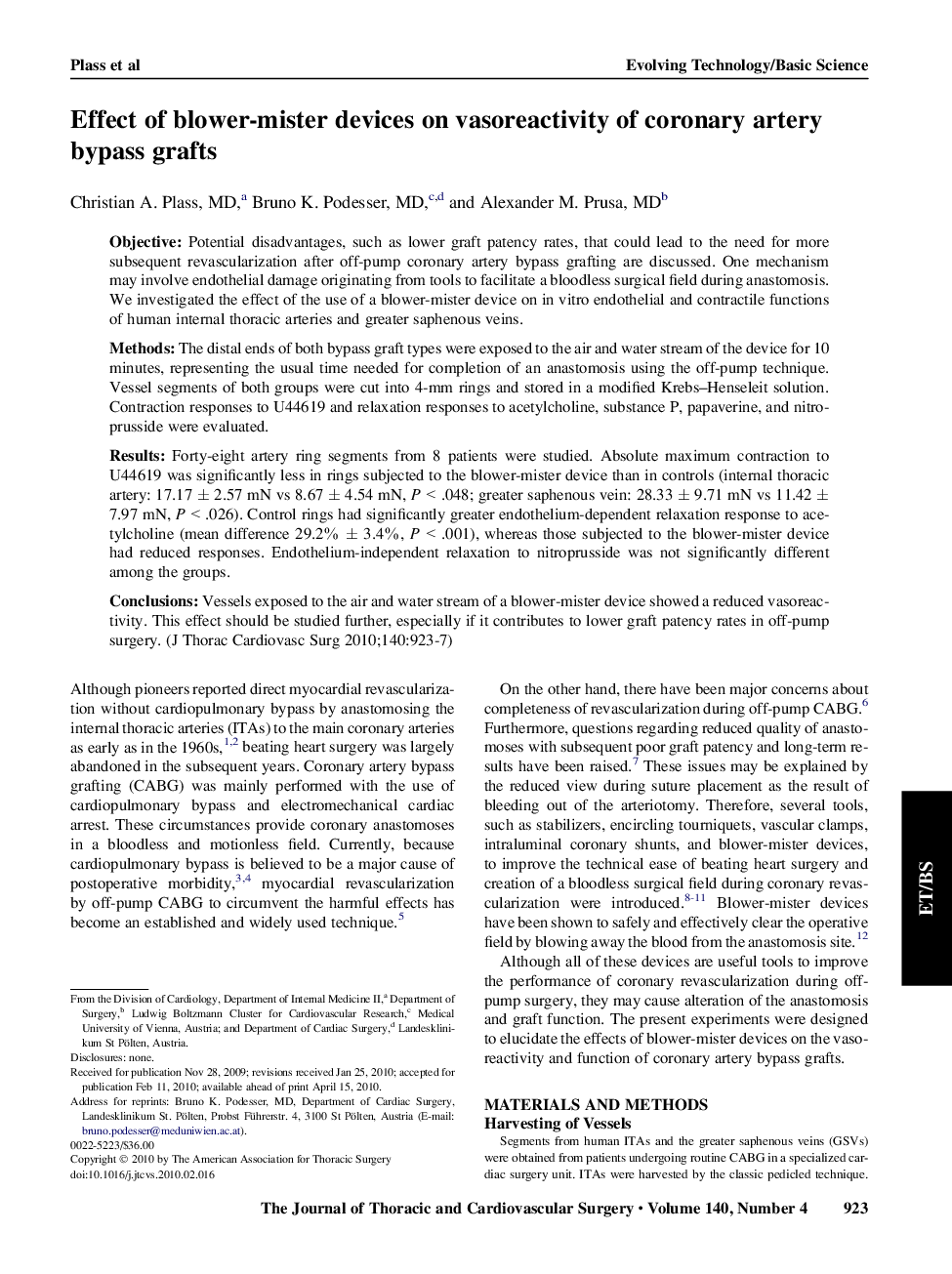| Article ID | Journal | Published Year | Pages | File Type |
|---|---|---|---|---|
| 2981943 | The Journal of Thoracic and Cardiovascular Surgery | 2010 | 5 Pages |
ObjectivePotential disadvantages, such as lower graft patency rates, that could lead to the need for more subsequent revascularization after off-pump coronary artery bypass grafting are discussed. One mechanism may involve endothelial damage originating from tools to facilitate a bloodless surgical field during anastomosis. We investigated the effect of the use of a blower-mister device on in vitro endothelial and contractile functions of human internal thoracic arteries and greater saphenous veins.MethodsThe distal ends of both bypass graft types were exposed to the air and water stream of the device for 10 minutes, representing the usual time needed for completion of an anastomosis using the off-pump technique. Vessel segments of both groups were cut into 4-mm rings and stored in a modified Krebs–Henseleit solution. Contraction responses to U44619 and relaxation responses to acetylcholine, substance P, papaverine, and nitroprusside were evaluated.ResultsForty-eight artery ring segments from 8 patients were studied. Absolute maximum contraction to U44619 was significantly less in rings subjected to the blower-mister device than in controls (internal thoracic artery: 17.17 ± 2.57 mN vs 8.67 ± 4.54 mN, P < .048; greater saphenous vein: 28.33 ± 9.71 mN vs 11.42 ± 7.97 mN, P < .026). Control rings had significantly greater endothelium-dependent relaxation response to acetylcholine (mean difference 29.2% ± 3.4%, P < .001), whereas those subjected to the blower-mister device had reduced responses. Endothelium-independent relaxation to nitroprusside was not significantly different among the groups.ConclusionsVessels exposed to the air and water stream of a blower-mister device showed a reduced vasoreactivity. This effect should be studied further, especially if it contributes to lower graft patency rates in off-pump surgery.
